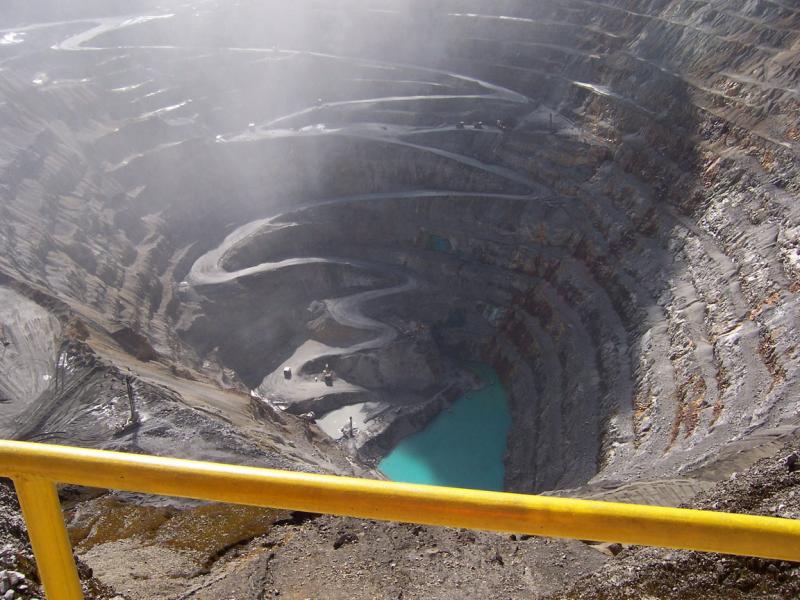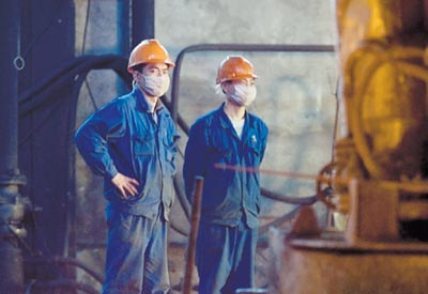Base metal mining companies have, for many years, operated in the shadows of precious metal miners. But with increasing demand from China and developing nations around the world, base metal miners may finally be getting the respect they deserve. Patricia Mohr, commodities specialist at Scotiabank, recently went so far as to call copper the ‘new gold’. Mohr says “Copper is much more profitable than gold. Considerably more, even with the record gold prices we’ve been seeing recently. That’s why I’ve been calling copper the new gold.”
Lately, other base metals have also fared well. Prices for nickel, zinc, iron and lead have rebounded dramatically from 2008/2009 lows and since stabilized. Unlike copper, however, other base metals have not reached new highs as the world recovers from the economic downturn.
Tom Whelan, head of mining and metals research at consultancy firm Ernst & Young notes, “Statistics from the Chinese government indicate demand (for copper) will grow to 12 million tonnes over the next 10 years on an annual basis. But the world’s supply won’t expand fast enough to keep up with the demand. It’s not like mining companies can just flip a switch.” China currently consumes 7 million tonnes per year or almost 40% of world’s supply.

One need look no further than Barrick Gold’s takeover offer of Equinox Minerals to illustrate that precious metals miners are becoming increasingly more comfortable with copper. Copper is of natural interest because it’s often found in deposits with gold.
The Grasberg Mine, located in the province of Papua, Indonesia, is both the largest gold mine and the third largest copper mine in the world. And the Grasberg mining district contains the world’s largest recoverable copper reserve and the largest gold reserve. It is majority owned through a subsidiary by Freeport-McMoRan Copper & Gold (NYSE: FCX). Annual production from the Grasberg Mine is estimated at over 600,000 tonnes of copper; 58,000,000 grams of gold; and 170,000,000 grams of silver.
Gold, and lately, even silver have gained cultish disciples that the less glamourous base metals cannot hope to match. But those looking for dependability in their investments can be assured of one simple metric; as the world grows, so too will the demand for industrial metals. To some, the dynamic between supply and demand for base metals in emerging markets can only mean one thing: good news for miners in the medium to long-term.
1. Lundin Mining Corp. (TSX:LUN)
On February 28th, 2011 Equinox Minerals launched a hostile bid for Lundin Mining that left Symterra blowing in the wind. Symterra was the proposed name of a new entity resulting from the friendly merger between Lundin Mining and Inmet Mining – a transaction valued at $9 billion.
Although Lundin pushed hard to complete the merger with Inmet Mining and thwart off the unsolicited bid from Equinox, Symterra was ultimately derailed after Panama imposed development rules that affected the proposed power supply to Inmet’s Cobre Panama mine. Panama’s government opposes the construction of a coal-fired power plant to supply electricity. Inmet CEO Jochen Tilk pointed out the mine would not face delays if the plant isn’t built because the project could rely on power from the national grid in the first few years of operation. At the time, Peter Campbell, a Toronto-based analyst at Jennings Capital Inc., said Lundin may be preparing to back out of its deal with Inmet, citing “material adverse change” in relation to the Cobre Panama project.
The merger and acquisition saga became even more convoluted when Barrick Gold, the world’s biggest gold producer, announced on April 25th, that it planned to buy Equinox for US$7.3 billion. Barrick President and CEO stated, “The acquisition of Equinox would add a high-quality, long-life asset to our portfolio and is consistent with our strategy of increasing gold and copper reserves through exploration and acquisitions.” Equinox’s main asset is the Lumbwana mine in Zambia, one of the largest copper mines to be developed globally in the last few years.
Prior to Barrick’s offer, Equinox was in the process of defending against its own unsolicited US$6.3 billion bid from China’s Minmetals Resources. But a substantial offer from Barrick was enough to scare off Minmetals and they promptly withdrew their offer. CEO of the Hong Kong Unit of one of China’s largest mining companies Andrew Michelmore noted, “Competing with Barrick at these prices would, in our view, be value destructive for MMR’s shareholders.”
With the Equinox board in support of Barrick’s offer, which included, that they terminate the Lundin offer or let the offer expire, this could be the third time a high-profile takeover has fallen apart for Lundin. In 2008, HudBay Minerals’ bid for Lundin was unsuccessful after its own shareholders objected to the deal.
So what’s next for Lundin Mining? For now, the company is neither hunter nor prey – or is it? On Friday April 29th, it was leaked to the press that a buying group headed by one of China’s largest base metal miners, Jinchuan Group Ltd., and includes the country’s giant sovereign wealth fund, China Investment Corp. was “in talks” to buy the company. Shares of Lundin Mining traded over 21 million shares on the day and closed at $9.26 up $0.92 on the speculative news.
2. Canada Zinc Metals Corp. (TSXV:CZX)
Zinc, the fourth most used metal on the planet trailing only iron, aluminum and copper, has a worldwide annual production of roughly ten million tonnes. Zinc’s primary use is in the galvanizing process of steel and in making alloys including brass and bronze. Although zinc doesn’t get anywhere near the same amount of attention as its sexier cousin copper, that may begin to change. China’s refined copper imports fell 43 percent in March year over year due to high stock piles and strong international prices while their Zinc imports surged 108 percent over last year.
In November 2006, Zinc prices hit a record high of US$4,580 tonne. At the time, analysts cited that the growing demand for zinc in China could increase by 56% by 2010 which certainly helped fuel the fire. China became a net importer of zinc in 2004. With the onset of the “Great Recession” in 2008 the price of zinc declined dramatically to just above $1,000 per tonne, far below the bullish projections a few years earlier. But in the first quarter of 2009, as marginal zinc mines were being shut down all over the world, zinc began a swift and steady recovery, reaching US$2,560 per tonne by the end of the same year, just slightly higher than where it currently trades.
Today, China produces about a quarter of the world’s zinc and consumes a third of it. And overall, Zinc consumption in China has tripled since 2000 – China consumes more zinc than USA, Japan, India, Germany, Italy and Belgium combined. Some analysts, however, believe this time China’s demand for zinc will continue unabated. This, coupled with demand from other emerging nations around the world is expected to push consumption to 15.5 million tonnes per year by 2020.

Peeyush Varshney, President and CEO of TSX-V listed Canada Zinc Metals is solidly in this camp. In August, 2005 Canada Zinc Metals entered an earn-in option agreement for 65% of its Akie property. A few years later, in 2007, the company acquired 100% of the Akie property and their entire claim package pursuant to a takeover. The next year the company completed its first NI 43-101 report on the Akie property. Soon after, China came calling in the form of Tongling Nonferrous Metals Group which subsequently made a substantial investment in Canada Zinc Metals. MiningFeeds.com sat down with Peeyush Varshney, President & CEO of Canada Zinc Metals to find out more about the company’s Chinese shareholder and what else is in store for 2011. CLICK HERE – for the interview.
For 10 Base Metal Stocks to Watch in 2011 – Part 2 – CLICK HERE.
Disclosure: at publication Canada Zinc Metals is a client of MiningFeeds.com.



 Follow us on Twitter
Follow us on Twitter Become our facebook fan
Become our facebook fan











Comments are closed.